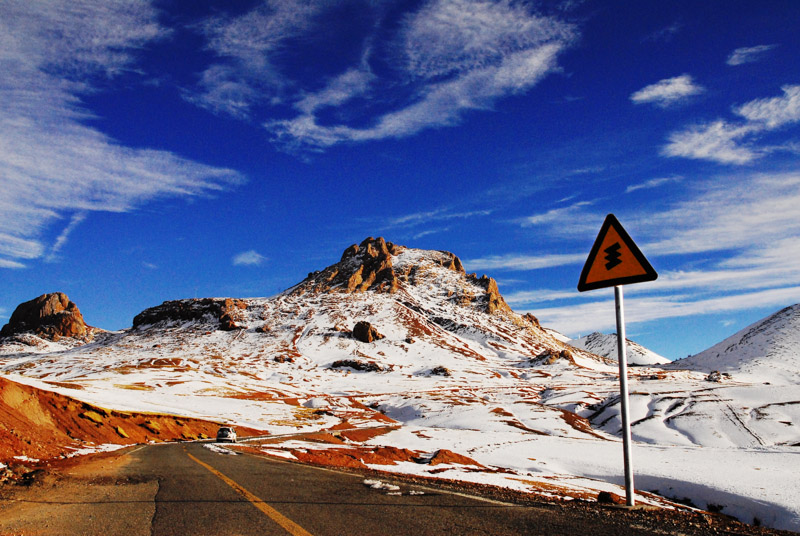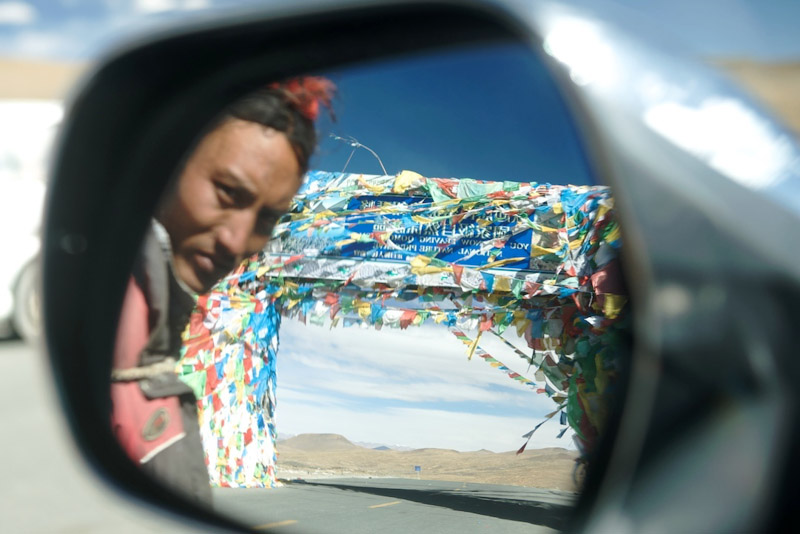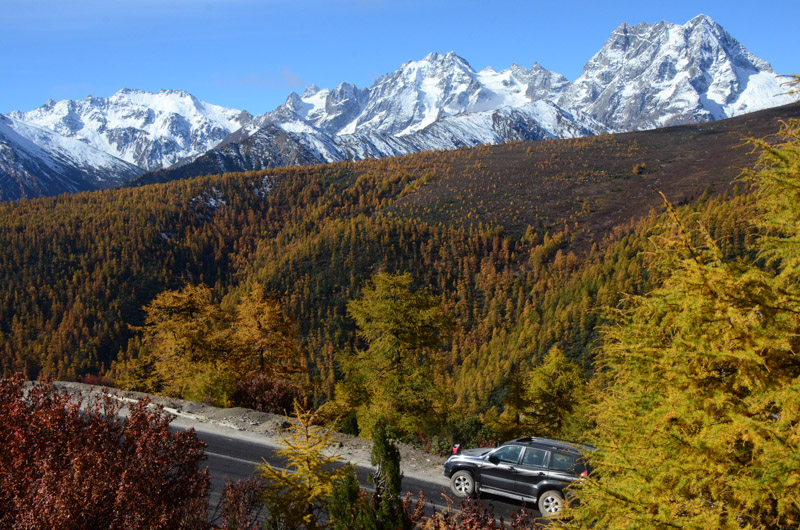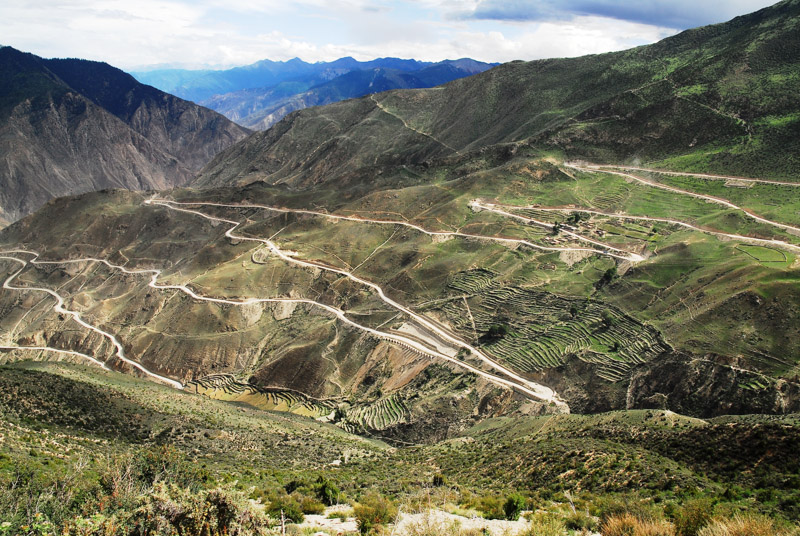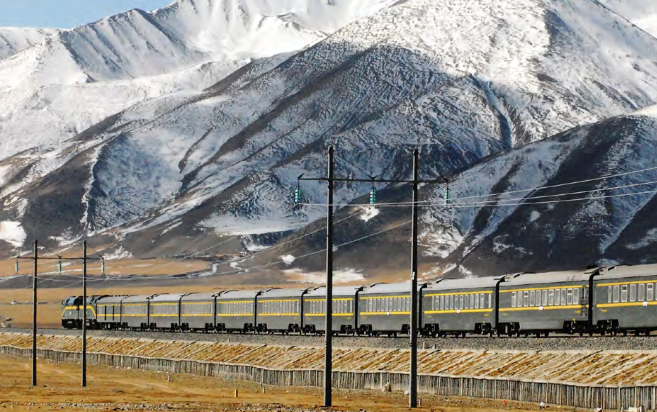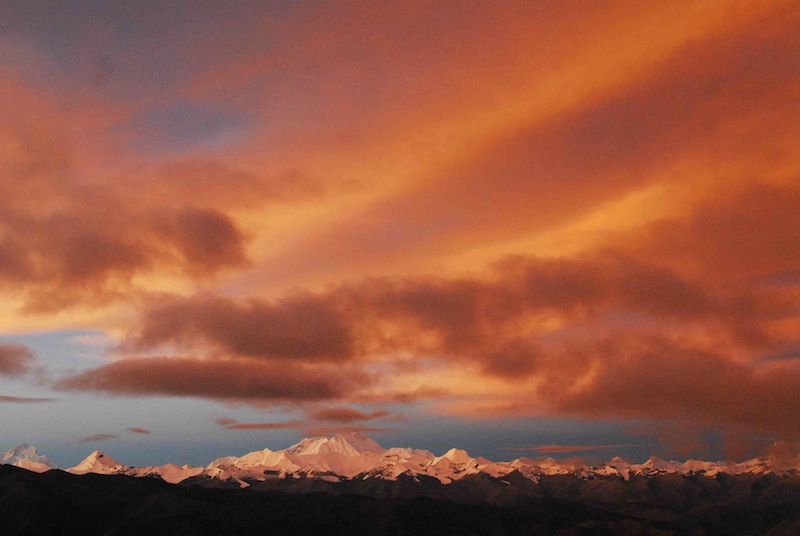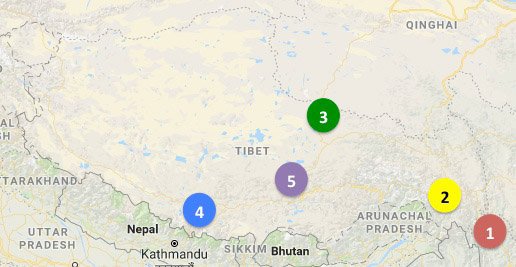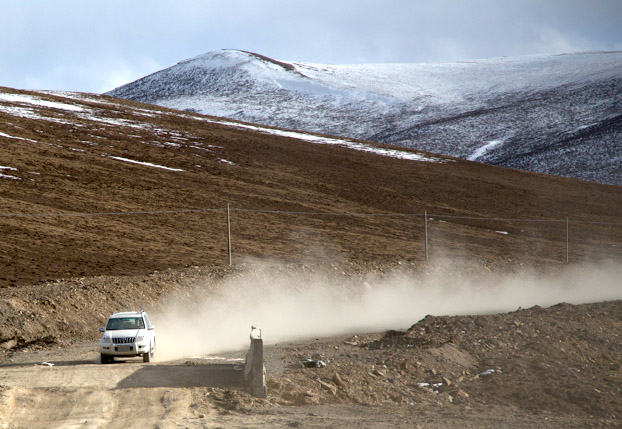There may be plenty to choose from, but we’ve managed to settle on a few spectacular favourites…
Mountain passes are sacred spaces for Tibetans. More than marking the point where an arduous climb gives way to a dramatic descent, they are also regarded as battlegrounds where good and bad gods are locked in an endless struggle. To ensure the right gods win, travellers festoon each pass with prayer flags, fling handfuls of mantras on thin coloured paper from car windows, and shout loud, exuberant prayers – “Ki ki so so lha gyal lo!” (“Victory to the Gods!”) – as they crest each pass.
For much of human history, mountain passes have been forbidding places; high, windswept and barren. Approached laboriously on foot or by mule, they have long provided natural doorways through otherwise impassable mountain ranges, funnelling people, goods and information along a single precipitous trail.
Today, however, some of the Tibetan Plateau’s many dramatic passes have been paved, bringing their grandeur within reach of any adventurous traveller with a car, a full tank of petrol (and the correct travel permits). Here is a handful of our favourites, should the spirit take you…
1 Baima Pass: Watershed moment
The road north from Shangri-La winds through lush forests and across azalea-studded hillsides to Deqin, the last sizeable settlement before you leave Yunnan and enter Tibet. (Please see the end of this piece for a map showing each pass.) While not yet in “Tibet proper”, this part of Yunnan certainly feels Tibetan, and the Baima Pass (白馬山埡口; 4,350m) is appropriately attired; topped with a white chorten and swathed in prayer flags.
The pass itself marks an important watershed: a drop of rain falling on the eastern side of the pass will eventually flow into the Yangtze and thence through the heart of China to the East China Sea. A drop of rain falling on the western side of the pass will drain into the Mekong and wind through South-East Asia to the Mekong Delta. Were that not enough, the pass itself is also part of the Baima National Reserve where red pandas and clouded leopards still roam, and the original home of most of the world’s species of rhododendrons and azaleas.
We cross the Baima Pass on Searching for Shangri-La and Lands of Silk and Snow.
2 The Yela Pass: Hairpin Heaven
What the Yela Pass (業拉山埡口) lacks in height, it makes up for in curves. On the western side of the 4,600m-high pass, the G318 drops in a dizzying, dusty descent through “72 bends” (though we’re not so sure about that number, having counted them a few times) down to 2,700m to cross the churning waters of the Salween on its way from Qinghai to the Andaman Sea.
We drive Yela’s 72 bends on Lands of Silk & Snow: Luang Prabang to Lhasa.
3 The Tanggula Pass: Mind the Gap
Despite its impressive height – 5,231m above sea level – the Tanggula Pass (唐古拉山埡口) itself is surprisingly unimpressive. The G109 road climbs gently up to the pass through a broad valley with scarcely a bend in sight. What makes the pass special is its context.
The G109 is the main road from Beijing to Lhasa. It was constructed in the 1950s, the first building materials laboriously hauled here by a combination of truck and camel. Running alongside the road is the Beijing-Lhasa railway, which reaches its highest point at the pass, a rare gap in the jagged wall of the Tanglha Mountains. Watching the handsome green-liveried trains pulling in to stop at the world’s highest train station make Tanggula special, despite its lack of drama.
We cross the Tanggula Pass on this journey from Chengdu to Lhasa.
4 Gawu La: Himalayan Highs
Drive out of Pelbar an hour before dawn, negotiate the border checkpoint and begin the steady, switch-backed climb up a steep, dark hillside to Gawu La (加烏拉山埡口; 5,198m). Nothing on the journey to Gawu La hints at the surprise awaiting you at the top of the pass. The pre-dawn murk gives way to rosy dawn light bathing the grandest scene in the Himalayas; Everest, Lhotse, Makalu, Cho Oyu and Shishapangma – five of the world’s fourteen 8,000m-high mountains – in a single glance. Even night owls might agree that that’s something worth waking up early for?
We make the dawn trip to Gawu La on Roads on the Roof of the World and Tibet through a Lens: Lhasa & Mount Everest.
5 Shogu La: Hidden Heights
To get between Shigatse and Lake Nam-tso, we use a small, unpaved road that cuts the corner off a long triangle of busier highways. While it looks like a short cut, the real reason we use it is for the joy of a beautiful drive. The road winds through some of the most beautiful countryside we’ve seen in Tibet, complete with tiny villages, nomads grazing their herds of yaks, great mountain scenery and Shogu-La (雪古拉山埡口).
At a breath-taking 5,450m high, Shogu-La is the highest road on any of our journeys. The pass itself may be narrow and modest – a literal doorway through the mountains – but the road there and away will leave an unforgettable impression of having seen the real “Roof of the World”.
We drive up and over Shogu-La on Roads on the Roof of the World and Tibet through a Lens: Lhasa & Mount Everest.
